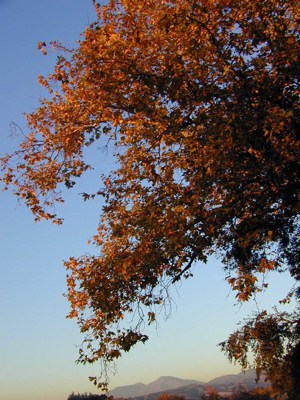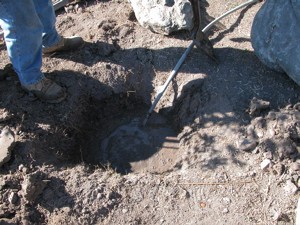Fall Planting Season – Get Ready!
- Posted in: Garden Planning Tools
- Tags Seasonal Gardening
 Though we are still experiencing some warm days, the weather has been cooling down and fall is upon us. The ideal season for planting natives is during our rainy period – fall through spring. Fall planting takes advantage of all the winter rain and allows the optimal amount of time for roots to establish. Whether planning a restoration planting or a commercial landscape, if you are planning a large project, please contact us soon to reserve your material. The time to procure your native plants is now! Usually, October 15 is considered the magic date when the planting season starts.
Though we are still experiencing some warm days, the weather has been cooling down and fall is upon us. The ideal season for planting natives is during our rainy period – fall through spring. Fall planting takes advantage of all the winter rain and allows the optimal amount of time for roots to establish. Whether planning a restoration planting or a commercial landscape, if you are planning a large project, please contact us soon to reserve your material. The time to procure your native plants is now! Usually, October 15 is considered the magic date when the planting season starts.
Remember these tips as you plant natives this fall for successful installation…
– Pre-Irrigation. If the soil is dry, you should pre-irrigate. If you are planting in the near future, you can probably sprout a crop of weeds by pre-irrigating and then control them by spraying an herbicide or grubbing them out a few weeks before your planting date.
– Water for planting. Pre-irrigate the area prior to planting, either by watering the whole area, or, by watering the holes you have dug, ensuring you have water right at the root zone once the plant is installed, be sure to let water drain into the soil before placing plants in the holes.
– Be Gentle. Handle plants carefully as you remove them and place them in planting holes.
– Plant High! Ensure that the plant collar (the spot the main stem meets the soil) will end up being about one-half inch higher than the surrounding grade.
– Water. Each plant should be watered as you replace backfill in the hole, or by filling the basin with enough water to soak to the bottom of the hole. You cannot depend on a spray-head sprinkler system to thoroughly water a new planting the first time. 
– Mulch. Apply clean, weed free, well composted organic mulch to the area around the plants, or to the entire site if practical. This will help cool the soil, retain precious soil moisture, keep weeds to a minimum, and strengthen the plants. Do not place mulch up against the stem of the plant, leave about 4-6 inches of bare soil. Avoid “green” (fresh) sawdust and hot manure products. An inexpensive and sustainable alternative to the commercial products like bark or shavings would be composted urban green waste. Leave some bare dirt for wildflowers (from seed you sow) to sprout and for ground-nesting pollinators to dig their nests.
–Establishment Watering. Whether you water by hand, with a portable drag-line or with a permanent sprinkler system, you need to apply enough water for deep percolation into the soil. The length of time that the sprinklers are on is called the duration. Watering at long intervals (infrequent irrigation) with long durations is much more effective than irrigating using frequent intervals and short duration. Once the rains start, let them water for you, but remember there can be dry spells in our “rainy season” too… so you may need to give your plants a good soaking to substitute for the missing rain event.
For more information about the fall planting season download our October Planting Season Sage Advice and our Creating and Caring for your Native Garden booklet. To see a thorough outline of planting instructions, please see our Planting Guide. If you need help selecting plants for your project, please consider attending one of our Selecting Native Plants for your Garden Workshops, held Saturdays this October or Download our Plant Catalog.
Planting other times of the year
Winter plantings are good, but sometimes the soil is too wet or the ground is too cold for early plant establishment. Spring plantings are very successful as well, though some attention will be needed as warm weather approaches at the end of the rainy season. The soil is warming up, the daylight hours are increasing, and more rain is probably on the way. If you plant in late spring, you will need to pay close attention during the first weeks of summer, as the plants will not yet be rooted into deep, moist soil. Summer planting can be achieved in areas of mild weather near the coast, in the shade, or inland with more intense care. Planting in late summer, (August/September), can prove a challenge, especially at inland locations. You might be better off waiting until mid-October, when the weather and soil are cooler and the rains are just around the corner.
So, get started now! Reserve your plants as soon as possible for that optimal mid-October planting day. And oh yeah, pray for rain. We need it.